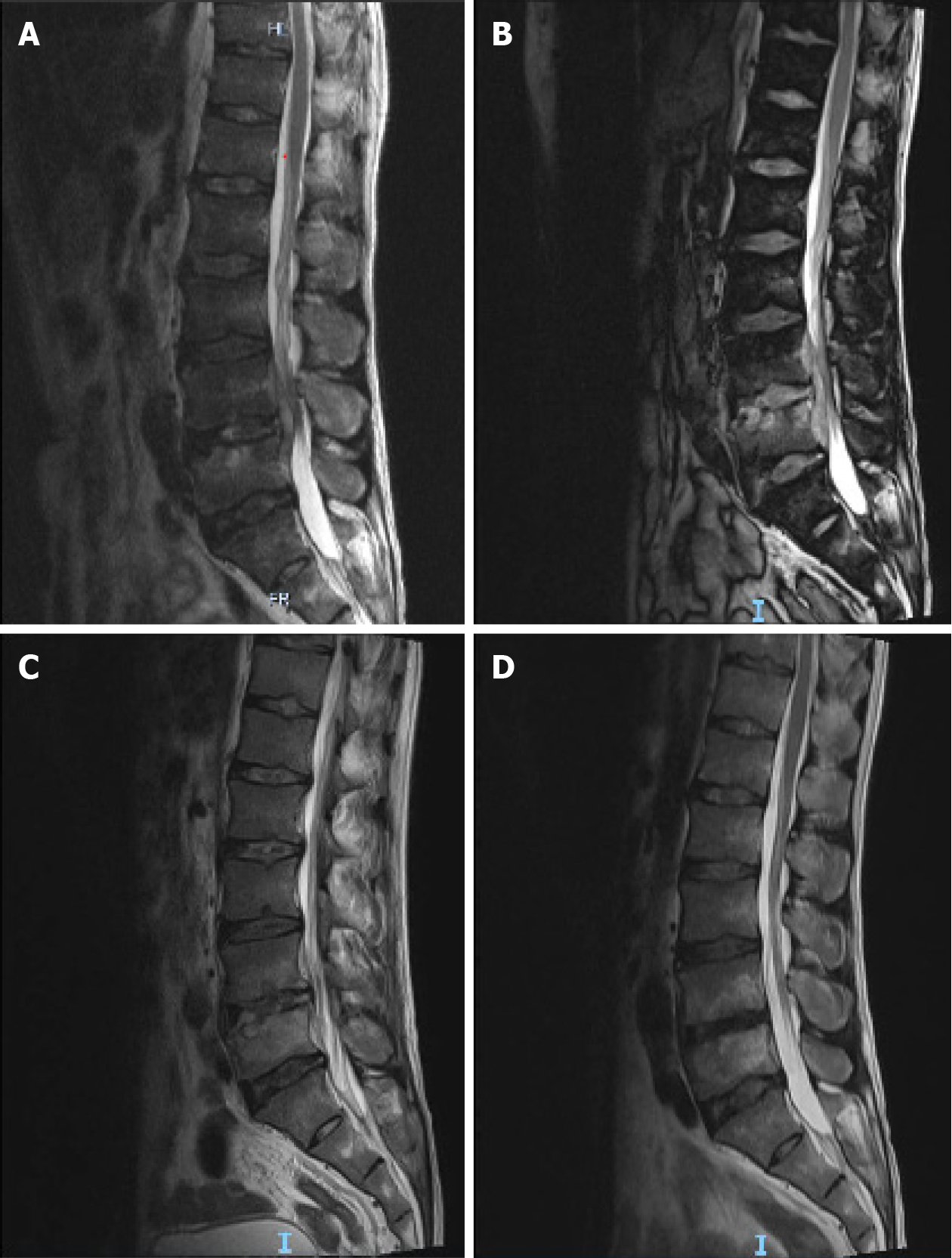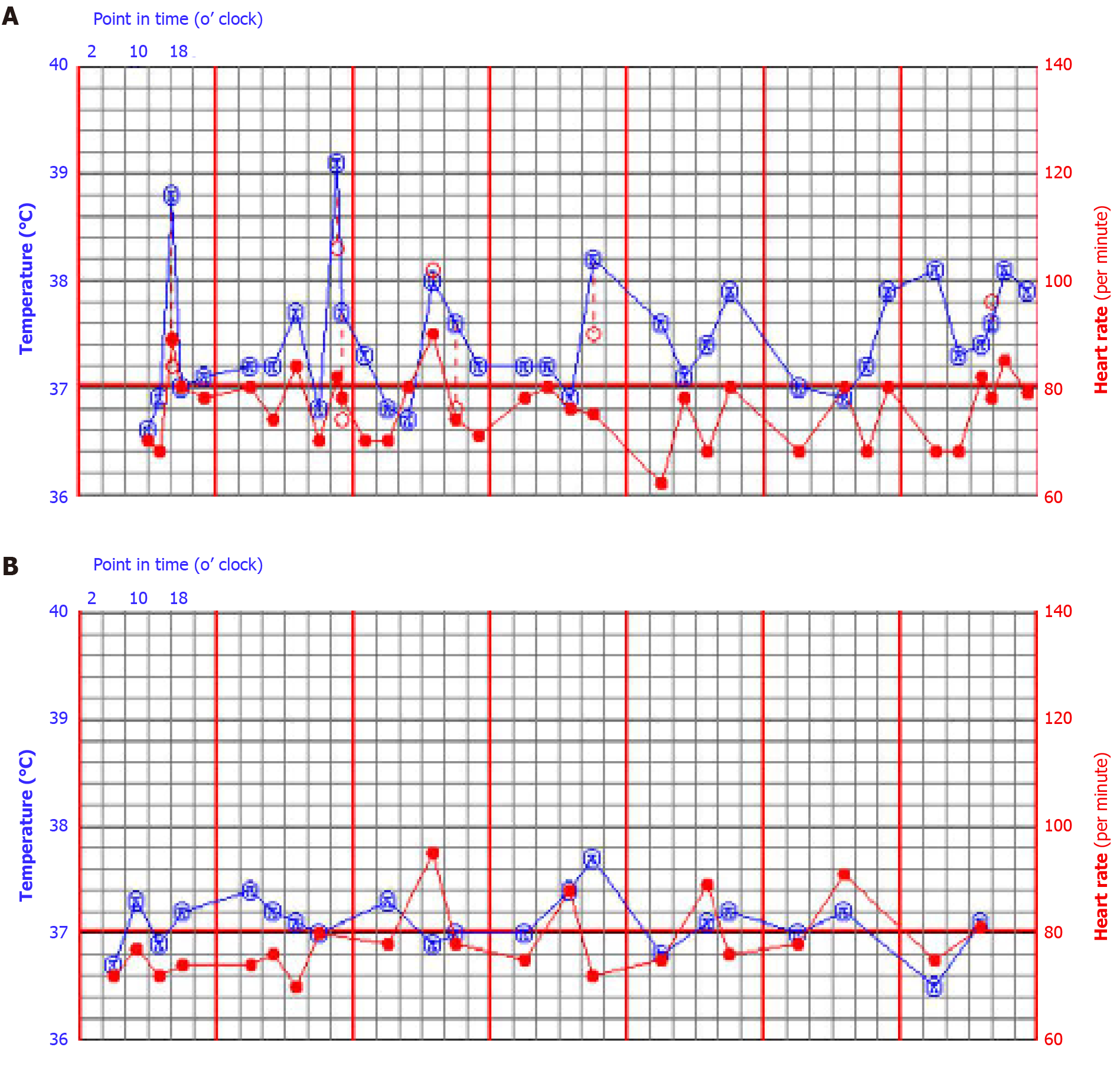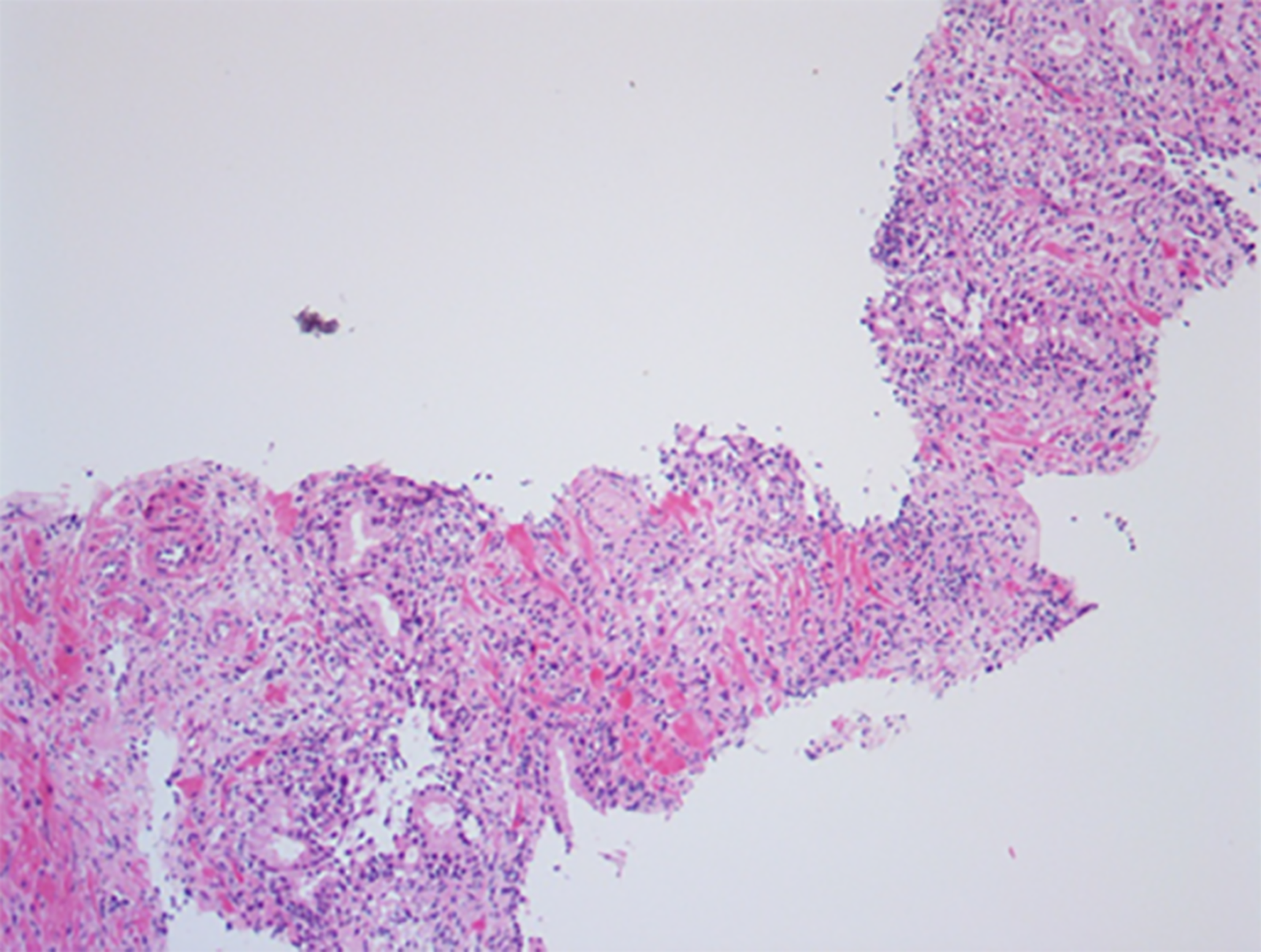Copyright
©The Author(s) 2021.
World J Clin Cases. Jul 26, 2021; 9(21): 6009-6016
Published online Jul 26, 2021. doi: 10.12998/wjcc.v9.i21.6009
Published online Jul 26, 2021. doi: 10.12998/wjcc.v9.i21.6009
Figure 1 Sagittal magnetic resonance imaging of the lumbar spine.
A: One week before hospitalization, damage to the L4 and L5 vertebral bodies and compression stenosis of the L4–5 Level vertebral canal are seen; B: One week after treatment for Brucella, the images are similar to the previous images; C: Two months after treatment for Brucella, a reduction in bone damage and improvements in spinal stenosis are seen; D: Six months after treatment for Brucella, further improvements in spinal stenosis are seen.
Figure 2 Positron emission tomography/computed tomography images.
A: A slightly low-density nodule on the left side of the prostate, with an uneven increase in fluorodeoxyglucose (FDG) metabolism; B: A slightly low-density nodule in the left lateral lobe of the liver with an uneven increase in FDG metabolism; C: L3/4/5 vertebral bone destruction with high metabolism of FDG.
Figure 3 Curve of temperature changes.
The blue line indicates body temperature, and the red line indicates heart rate. A: One week before treatment for Brucella, the body temperature increased continuously, mainly between the afternoon and the middle of the night; B: One week after starting treatment, the temperature gradually returned to normal.
Figure 4 Hematoxylin and eosin staining of the prostate tissue.
Normal prostate tissue is observed, accompanied by infiltration of inflammatory cells.
- Citation: Yan JF, Zhou HY, Luo SF, Wang X, Yu JD. Rare case of brucellosis misdiagnosed as prostate carcinoma with lumbar vertebra metastasis: A case report. World J Clin Cases 2021; 9(21): 6009-6016
- URL: https://www.wjgnet.com/2307-8960/full/v9/i21/6009.htm
- DOI: https://dx.doi.org/10.12998/wjcc.v9.i21.6009












